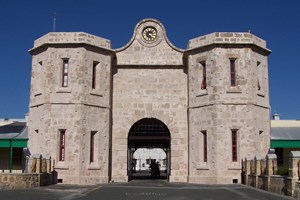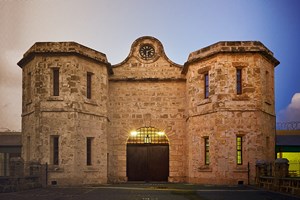Projects
The conservation projects being undertaken as part of the implementation of the Fremantle Prison Master Plan 2019 - 2029 together with the regular maintenance programs promote the long-term and sustainable conservation and protection of the site.
Executed under the guidance of recognised heritage architects and builders, each project is carefully researched and documented to ensure appropriate traditional materials and methods are used consistent with the Prison’s conservation policies and the Burra Charter, and that the heritage values are maintained and interpreted for visitors. Each project is fully documented and submitted to the Heritage Council of Western Australia for endorsement.
The decision to manage the Prison as an historic reserve, the recognition of conservation of the heritage significance of the site as the underlying objective of management, and the application of state and national heritage legislation, ensures ongoing conservation management practices that will conserve its possible World Heritage values, its national, state and local values.
The extensive program of works undertaken to date has made a substantial contribution to improving the overall state of conservation of the site, which had been affected by poor maintenance practices employed in the decades prior to the Prison being decommissioned.
Completed Projects
A number of conservation projects have been undertaken since 1991 that have sought to preserve or restore existing fabric, and in some cases reconstruct fabric to improve legibility and interpret its use over time. Each project has been guided by the Prison’s conservation policy that recognises the primary significance of the Prison as evidence relates to the imperial convict period and to the adaptation of the fabric as a colonial gaol for males and females. Whilst existing adaptations have a part to play in illustrating the working of the Prison up until 1991, reference to the assessed levels of significance provides a model for resolving conflicting needs, but in general, the convict and colonial periods take precedence over later works. The use of compatible materials, for example limestone of similar properties quarried locally and limestone mortars, together with traditional tooling methods are specified for conservation projects. Where reconstruction is not feasible, replacement of like with like is specified to ensure the character of the Prison is retained.
Fremantle Prison is in an exceptionally intact form due to its 136 years of continuous use as a place of incarceration and immediate transition to heritage conservation site upon being decommissioned as an operating gaol. While changes have occurred during that period, the substantial nature of the original construction, in limestone blocks, and the piecemeal nature of changes, has meant that the original underlying structure remains intact, or is readily recognised from surviving evidence, both physical and documentary. The damage caused to the roof at one end of the Main Cell Block by fire during a prisoner riot in 1988 has been repaired using traditional materials and workmanship, and is now fully conserved.



